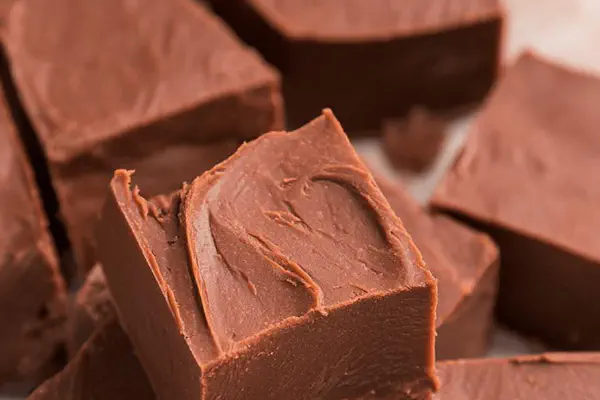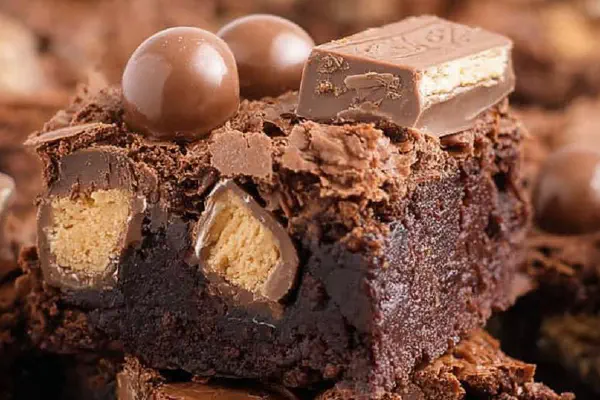Cookies and Cream Fudge Remix

By Emma
Certified Culinary Professional
Ingredients
- 2 cups white chocolate chips
- 1 can (14 oz) sweetened condensed milk
- 2 cups crushed Oreo cookie chunks
- Half teaspoon flaky sea salt
- Half cup additional crushed Oreo cookies for topping
About the ingredients
Method
- Prep foil or parchment-lined 8×8 pan first; folds easy to lift fudge out later. Avoids stuck edges hell.
- Medium saucepan; low heat, melt white chocolate and condensed milk together. Stir slowly—steady rhythm, no rush. Chocolate should gloss and swirl into uniform shiny pool. Avoid boiling; no scorched, grainy fudge.
- Off heat, fold in 2 cups cookie chunks and salt. Salt quiets sickly sweet, adds depth. Fold not stir. Breaks up large clumps, keeps texture.
- Spoon fudge into pan; spread with rubber spatula or back of spoon. Not too thin; want bite but still creamy. Press lightly to level.
- Sprinkle remaining cookies evenly on top; press gently. This keeps crunchy bites front and center, shows contrast. Don't press too hard or cookies sink.
- Leave on counter until cool enough to firm, about 1 hour depending on room temp. Check by touch; fudge feels set but still soft.
- Slide pan into fridge at least 2 hours or until fully firm and slice-ready. Cold fudge cuts clean; warm fudge smushes.
- Use sharp knife dipped in hot water then wiped dry to slice squares easily. Wipe blade between cuts to avoid ragged edges.
Cooking tips
Chef's notes
- 💡 Low and slow heat on melting prevents grainy mess. White chocolate breaks easily if rushed or scorched. Watch for gloss and swirl; sheen signals readiness to fold cookies in without lumps or overheating. Constant stirring kills texture.
- 💡 Fold Oreo chunks gently off heat after melting mix ready. No stirring or smashing. Keeps chunks intact and noticeable crunch later. Salt sprinkled now does more than flavor; quiets super sweet condensed milk, balances layers. Half crushed inside, rest on top; texture contrast wins.
- 💡 Line pan with foil plus parchment combination to avoid sticking from condensation. Avoids fudge tearing or uneven bottoms. Foil folds make lifting fudge out easier than bare pan edges—critical to cut clean without sticking or mess.
- 💡 Cool fudge at room temperature first, touch test key. Should feel set but soft, not warm or hot when hitting fridge. Too-hot fudge causes sugar crystallization and grainy texture; too-cold leads to rock-hard, dull bites. Watch surface for dull sheen before refrigeration.
- 💡 Knife method: dip blade in hot water, wipe dry between cuts. Prevents fudge sticking to blade and ragged edges. Sharp knife essential; dull edges crush fudge into crumbs, ruins squares. Keep blade warm and dry for clean snap slices.
Common questions
Why fold cookies instead of stirring?
Folding keeps chunks. Stirring breaks pieces, makes paste. Texture matters, chunks give crunch. Folding also spreads cookies evenly. No smashing Oreo dust here.
Can I substitute milk chocolate for white?
Milk chocolate changes flavor profile. Use good quality chips to avoid waxy or gritty result. Melting characteristics differ; watch heat carefully. Sweetness less intense, salt balance shifts.
What if fudge gets grainy?
Usually heat too high or sugar crystallizes. Melt low, slow. Stir gently until smooth. Cooling too fast or over stirring after cooling triggers graininess. Reset by reheating gently or adding cream if salvage needed.
How long to store fudge?
Refrigerate tightly covered weeks safe. Room temp a few days only, humidity risks. Freeze wrapped well; thaw in fridge for texture. Avoid moisture exposure; fudge absorbs odors, becomes sticky if uncovered.



